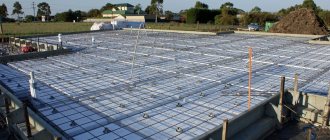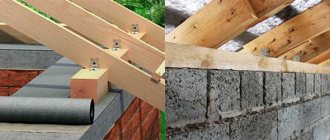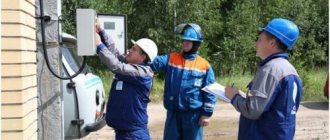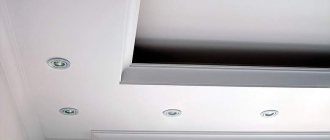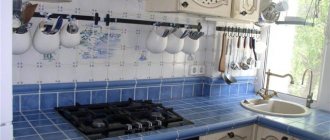Thanks to the well, clean water that can be drunk and used for domestic purposes is obtained in suburban areas that are farthest from the amenities of civilization. But drilling a well is not all the worries, because it needs to be connected to the house. There are some nuances here: for example, the water supply must be connected to a source below the soil freezing level. A well can be connected to a water supply in several ways, but today we will look at one of them, namely, an adapter for a well.
Well adapter
What is it and how it works
Borehole adapter is a structural unit that connects the pressure hose from the pump to the main water pipe supplying water to the storage tank. The device allows you to change the direction of liquid flow by ninety degrees and hide the source with the water pipeline underground. The design consists of two elements:
- A fixed part in the form of a pipe mounted into a hole in the casing pipe. One side of the element is located in the well string and has a rectangular shape with a wedge slide for mating with the moving part of the adapter. On the other side of the pipe, protruding beyond the casing, a thread is cut for connection to the main water conduit and along which the part is attached to the column using a seal, a shaped washer and a nut.
- A moving part in the form of a tee pipe with internal threads on both sides and a side ebb in the form of a rectangular flange with a rubber seal. The sides of the flange are dovetail shaped for connection to a fixed part in the column. One side of the pipe is connected to the HDPE pipe from the submersible pump, and the other with a blind hole is intended for a rod used to fix the elements of the device together.
The assembled parts of the device represent an angle pipe, but the possibility of disconnecting the structure allows for prompt dismantling of the pump from the casing.
Operating principle
It consists of connecting structural parts that create a common water supply line from a deep-well pump to a storage tank.
- the work is done using a rod with a thread cut on one side and a welded handle on the other. To connect to the moving part of the structure, it is screwed into a threaded hole on the moving part of the device. The size of the rod corresponds to the depth of soil freezing, taking into account the required release from the well string;
- after fixing the rod in the movable nozzle using the handle, the movable part is pulled out of the wedge connection of the stationary part of the nozzle and, together with the hose and the deep-well pump, is removed from the casing;
Unlike a source equipped with a caisson, the operation of removing the pump from the casing with an adapter is completed in a few minutes instead of an hour's work.
Types and characteristics
World adapter manufacturers, including our country, produce designs that are classified according to the material used for manufacturing and dimensions.
The dimensions of the device are determined by the volume of the deep-well pump, the diameter of the casing and hose. Adapters are divided by type of metal:
- Made of bronze alloy.
- Made of brass.
- Made from stainless steel.
- Made from DZR, a special anti-corrosion alloy.
According to the size type used, depending on the diameters of the pipes, the designs are divided into: 4.4 cm, 5.4 cm, 7.3 cm.
One part of the nozzle is fixed at a depth of 1-2 m to the casing and to get to this connection you will have to dig; the pipes for the adapter are best made of stainless steel.
When purchasing an adapter, you need to check with the manufacturer and read the certificate so as not to purchase a product with poor characteristics.
Conclusion
Now it will be easier for you to select this unit and you can easily connect the adapter for the well with your own hands. The video in this article shows the installation of the adapter clearly, but if you have any questions, write in the comments, I will try to help.
It is not advisable to install the adapter on a well located far from home.
Did you like the article? Subscribe to our Yandex.Zen channel
Advantages and disadvantages
By determining the positive and negative qualities, the product is compared with the caisson traditionally installed when constructing a well. The advantages include:
- the ability to operate the source all year round, with water supplied to the house;
- the cost of the structure with installation is 5 times less than when constructing a well with a caisson;
- ease of installation and maintenance of the product and deep-well pump;
- there is no need for additional space on the site;
- tightness of the device;
The disadvantages include the need to dig a pit to replace a failed seal on a non-removable part of the structure attached to the pipe.
Frequently asked questions to our engineers
Why is the choice of pumps limited when using an adapter?
The adapter partially occupies the space inside the casing, and the internal flow area is reduced accordingly. Today there is a large selection of pumps with a diameter of 3 inches in different price categories.
All my neighbors have caissons or wells, but for the cost I’m happy with the adapter. But I doubt my choice because they appeared recently.
Technical progress is inevitable, new mechanisms are replacing old ones. In many cases, modern equipment is technically more advanced. Adapters have been used for many years. They are time-tested and have advantages. But don't forget about the shortcomings. If possible, choose a caisson.
If I choose an adapter, can I make a watering tap next to the well, and not pull it from the house?
Technically, this is possible - a tee is cut into the water pipe at the outlet of the watering tap. But experts do not consider this solution reliable! We warn in advance that such a system will last no more than 2-3 years if you have clay soils on your site. Filling with sand or crushed stone under the drainage system ensures the operation of the system for a limited time, then the crushed stone or sand is mixed with clay. But the warranty period has already expired, and the company that installed the water supply is no longer responsible for the use of unreliable solutions.
Video reviews of our long-time clients, whose services were provided 4-5 years ago. Their impressions of the operation of our systems: Read more
Look at an example of our completed work on the arrangement: Water well in the village of Barybino
Find out what is better to choose when arranging a source - a metal caisson or a well adapter: Read more
What to consider when choosing between an adapter and a caisson
The use of a caisson for arranging a source provides access to the head of the casing and placement of equipment for purification and accumulation of water, as well as a device for monitoring the operation of the pump.
Installing an adapter allows you to supply water to the house if there is a technical room directly from the well, regardless of weather conditions.
The cost of arranging a source with a caisson is 3-5 times more expensive than installing an adapter for water.
When deciding on the construction of a well, we proceed from the following conditions;
The installation of a caisson is justified if:
- there is no technical room in the house;
- the territory of the site allows;
- seasonal well operation;
- no restrictions on funds;
It is advisable to use the adapter when:
- needs for year-round water supply;
- availability of technical premises in the house;
- limited area of the site;
- limited family budget;
Construction of a needle well with a Baker adapter
All of the above procedures involve connecting a submersible pressure pump to the adapter, and only the technical characteristics of the Baker well adapter provide for operation of the device under vacuum, which means it can be used to connect a surface pump capable of developing a vacuum at the suction of no more than 0.8 MPa.
Such a vacuum is sufficient to construct a water supply system from an Abyssinian well by connecting a column of pipes to the corresponding fitting of the Baker adapter. The depth of water rise should not be more than 8 meters, as evidenced by the permissible vacuum value at the inlet of the pumping unit.
What tools will you need?
To carry out excavation and installation work yourself, you will need a set of tools:
- bayonet shovel;
- scrap (if there is rock or gravel soil);
- yardstick;
- extension cable;
- electric drill with a core cutter;
- grinder (grinder);
- gas adjustable wrench;
Auxiliary materials required for work:
- sandpaper;
- water-repellent sealant;
- tightening clamps;
- connecting fittings.
How to install it yourself
It is advisable to carry out excavation and installation work at above-zero temperatures, without precipitation. The installation of the downhole adapter can be done using step-by-step instructions and the experience of the craftsmen.
In order to quickly install the device and water pipeline, before the main work it is important to carry out the following preparatory work:
- Obtain information about the depth of soil freezing in the area where the source is located.
- Familiarize yourself with the parameters of the well: depth of the aquifer (should not exceed 70 meters), production capacity, casing diameter.
- Based on these well parameters, select a deep-well pump and a pressure food pipe with a diameter corresponding to the dimensions of the holes of the device. Purchase a pump control cable, a well cover and select an adapter.
- Purchase: control and monitoring devices for the operation of the source, a condenser and equipment for water purification.
- For the main water route, purchase a pipe and adapters.
- Prepare the necessary tools and components for assembling the water pipeline structure.
- Around the casing we clear the space required for work from soil to a depth exceeding the freezing level by half a meter, and dig a trench to the house for laying a water pipe.
- Using a grinder, we cut off the casing at ground level, clean the cut edges, install and secure the well cover.
- In the casing, at the bottom of the dug trench, we proceed to install the downhole adapter. Using a hole saw matched to the diameter of the product pipe, we drill a hole in the pipe wall.
- We insert the stationary part of the adapter into the hole on the column and secure it to the pipe with a nut using an open-end wrench. First, we put a rubber seal and a shaped washer on the pipe, ensuring the tightness of the connection.
- After the nut, we screw an adapter onto the pipe, to which we mount a water pipe, laying it in a trench to a storage tank in the technical room.
- We connect the hose, cable and safety rope to the submersible pump, combining them into a single string. We lower the pump into the casing to the required depth.
- We cut off the pressure hose and attach a fitting to the end, using it to connect the pipe to the moving part of the device.
- We insert the power cable into the hole in the well cover and stretch it along the trench to the technical room, connect it to the control panel.
- We screw the rod into the movable branch pipe of the structure and, lowering it into the casing pipe, insert the part into the stationary part of the device.
- We tighten the safety rope and secure it to the column, removing the load from the pump and hose with cable from the adapter. We remove the mounting rod from the shaft.
- We turn on the pump, pass water through the assembled system into a storage tank, and check the tightness.
- We close the well cap and fill the trench. The house's water supply system is prepared for operation.
Briefly about the main thing
Wanting to protect the water supply from freezing, spending a minimum of money on it, it is removed from the well through an adapter installed in the casing pipe underground. This method preserves the tightness of the source, reduces the time to put the well into operation, but excludes free access to the hydraulic unit for inspection and repair. However, if the installation technology is followed, its service life is at least 20 years, and such rare “excavations” should not create problems.
Ratings 0
Maintenance and service
Technical inspection of the product is combined with maintenance of the well pump.
- when lifting the deep unit from the casing pipe, together with the pressure hose, the moving part of the device is removed;
- The main wear and tear on the product is the seals. Rubber rings lose elasticity and are damaged by fine abrasives in water. If defects are detected, the seals are replaced with new ones;
- The threaded connection of the removable pipe of the product with the fitting on the pressure hose is checked. If a thread leaks, the seal or fitting must be replaced;
- if during operation the fixing ridge of a moving part of a device with a stationary element on a pipe is damaged, the moving part of the product will have to be replaced;
- To replace the damaged seal of the stationary part of the device, it is necessary to dig out the casing before inserting the product, disconnect the water line and remove the nut from the pipe.
Which is better
The construction market offers adapters installed on the well, produced by domestic and foreign manufacturers. The popularity of devices depends on environmental friendliness, reliability, precision of execution and durability:
- Products made from bronze and brass alloys oxidize and negatively affect water quality. Therefore, the use of devices made of these alloys is limited to wells for technical purposes.
- DZR alloy fixtures provide corrosion resistance at the expense of zinc loss during manufacture. The material has a positive effect on the quality of drinking water and is classified as a food alloy.
- Stainless steel adapters meet these requirements in all respects.
Among the companies whose products are in demand on the market are:
- American company Baker - manufactures from bronze alloys;
- European manufacturer Debe Pumpar - devices made of DZR alloys;
- American company Granby Harvard - stainless steel devices.
The average cost of products, depending on the material used and the manufacturing company, is from 2 to 6 thousand rubles per piece. The cost of installation with excavation works ranges from 8 to 10 thousand rubles.
Photos and video materials, in which the authors show in practice how to carry out installation work correctly and what mistakes should not be made, help to install the downhole adapter efficiently and quickly.
Rating of the best manufacturers of downhole adapters
Among the large number of different companies producing adapters for wells, perhaps there are several that are most popular among consumers:
- Baker. The company produces steel adapters designed for the circulation of drinking water. The devices she created are designed to work with pipes up to 8 m long and pressure systems capable of withstanding pressure up to 8 atmospheres, respectively. In general, consumers note that the Baker product is one of the best for domestic (home) water supply systems.
- Vinkell. The company produces high-quality downhole adapters made of bronze. By the way, the adapter can be connected to a casing pipe of a very small diameter - about 12 cm. But this is not the only thing that makes the Vinkell product stand out from others: the quality of the adapters is so high that the device can be installed even in unstable or contaminated soil layers (near the foundation/sewage ).
Downhole adapter Vinkell - DebePumpur. The products of this company meet strict European quality criteria. The adapter body is able to resist corrosion for a very long time. The “highlight” of adapters from DebePumpur is the presence of built-in thermal protection (heating). And this, in turn, means that such well adapters can be installed even at the level of soil freezing: you just need to connect the device to a household power supply and you don’t have to worry about freezing of the water supply system.
Advice.
You should not give preference to unverified manufacturers of well adapters in pursuit of a low price, as this may lead to the purchase of low-quality equipment, and this, in turn, will lead over time to serious problems in the plumbing system. This concludes our introduction to the well adapter, as well as the features of choosing a suitable device for the plumbing system in the house. Be careful. Happy shopping!


